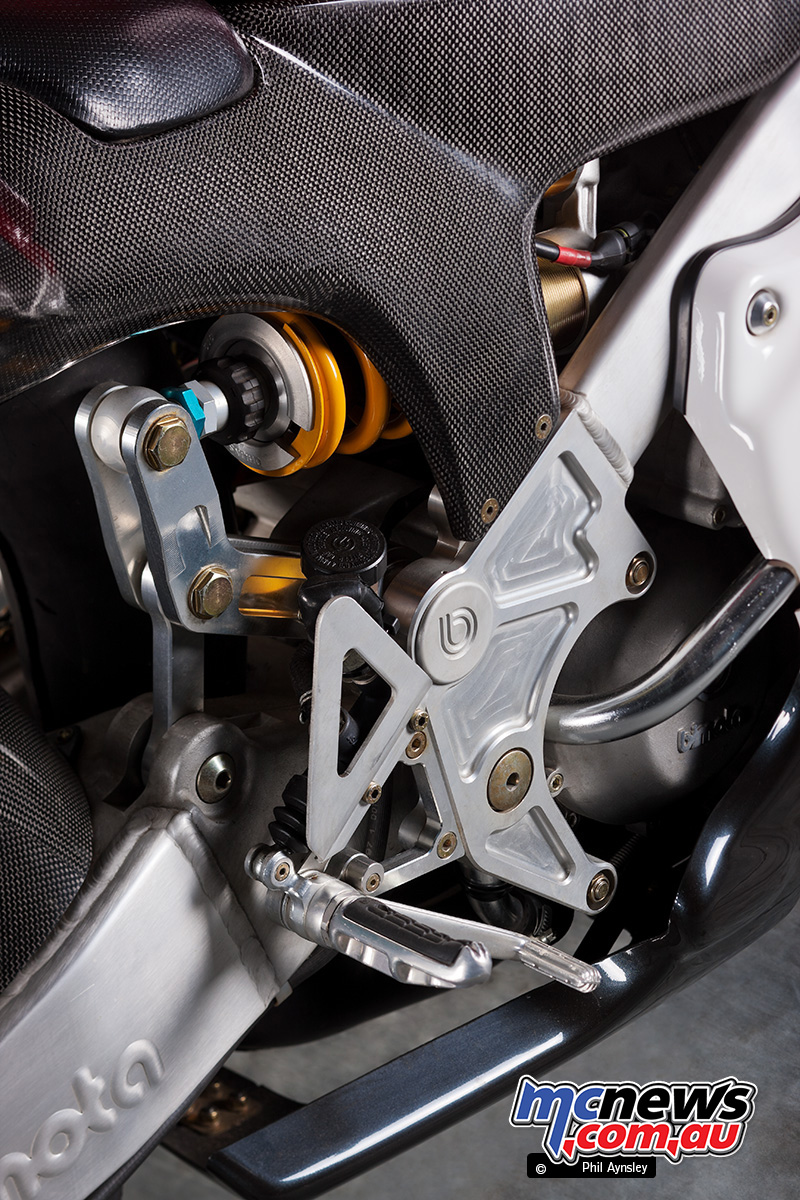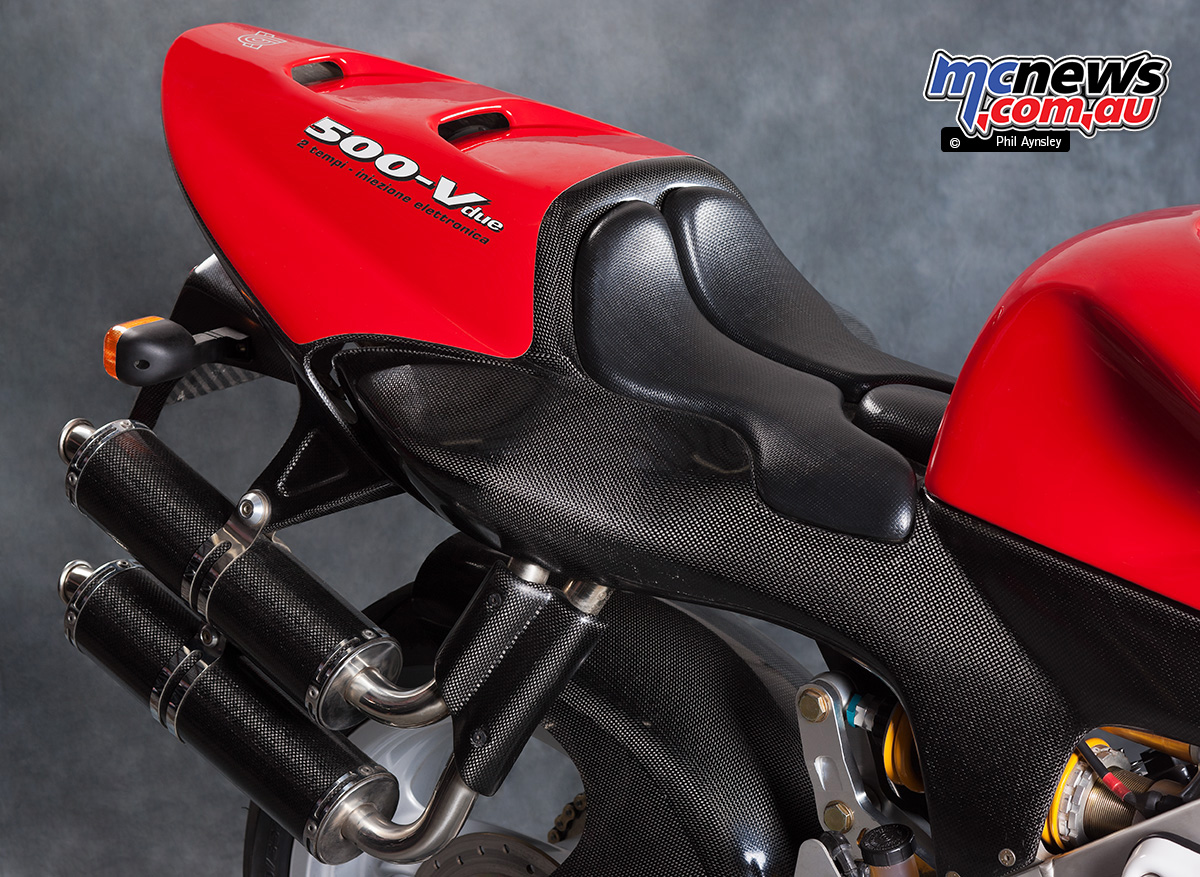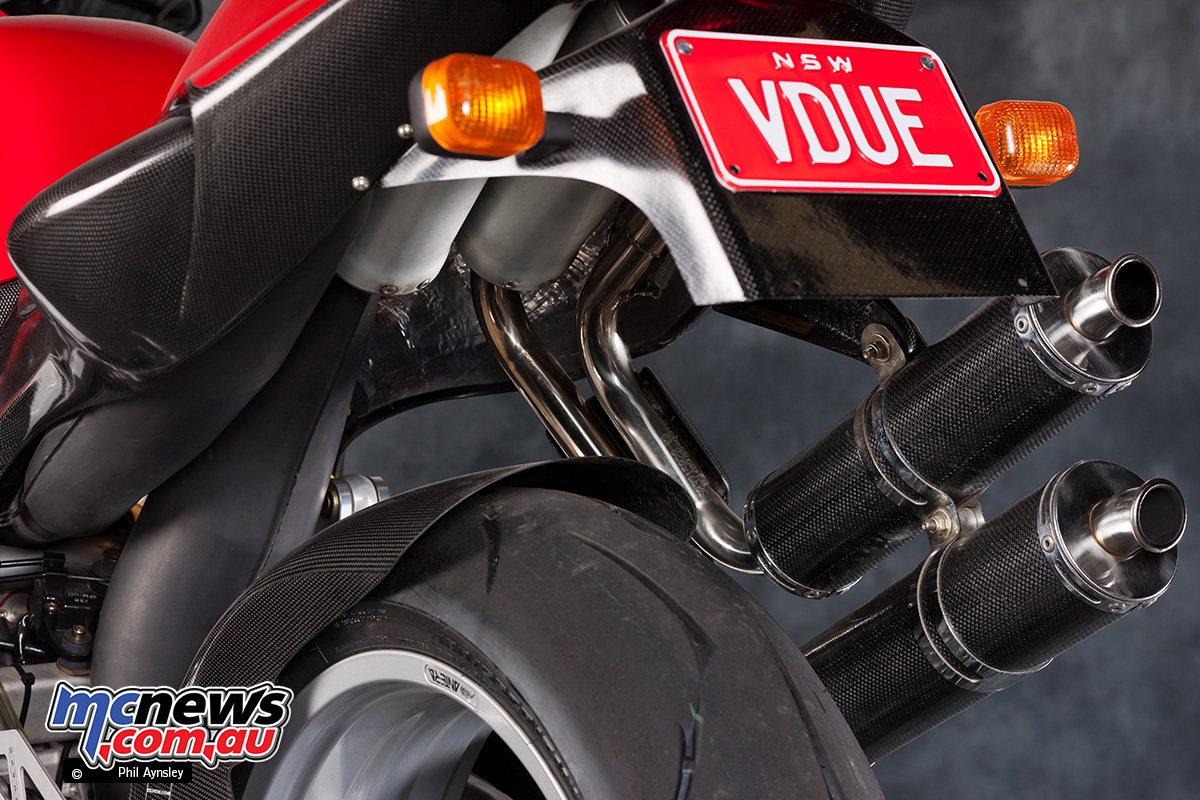Bimota 500 V-Due
The bike responsible for Bimota’s demise
It’s not often you get to photograph a bike that was responsible the the demise of a manufacturer (thankfully)! However the Bimota 500 V-due is one such machine.
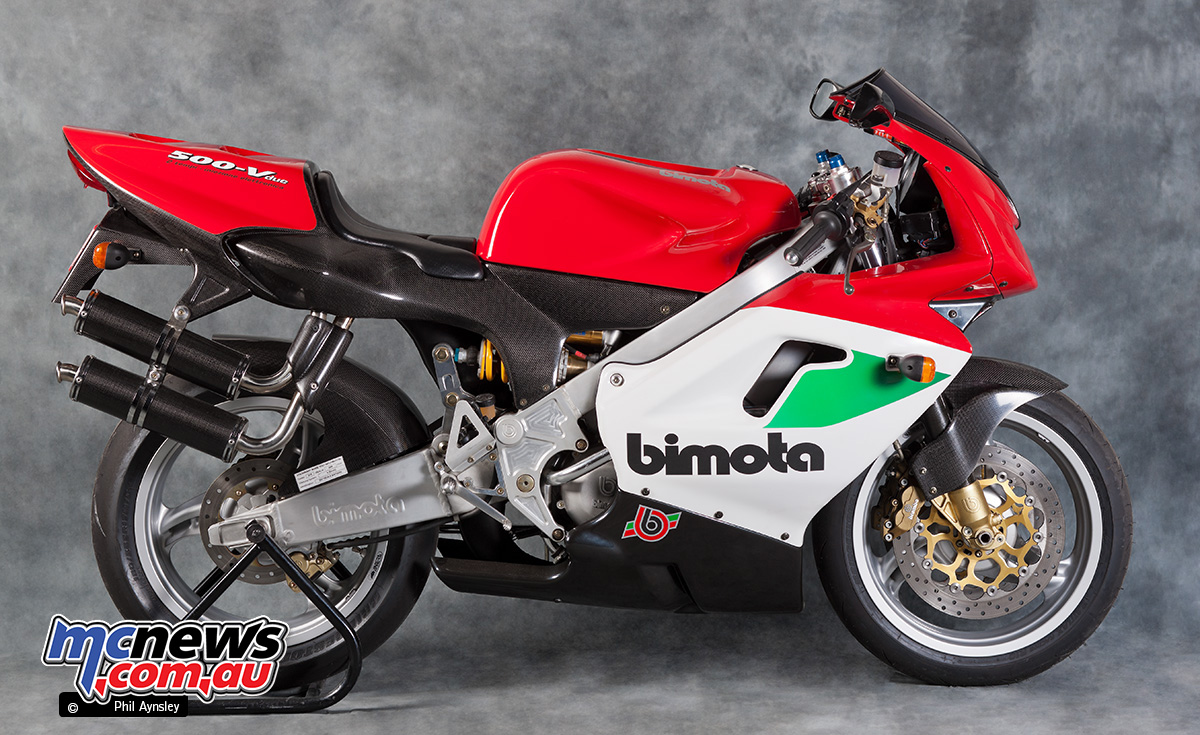
The V-due was originally developed by Bimota as a GP project (similar to the Honda NSR500V and Aprilia RSW-2) but that was soon switched to a road design. It was the only Bimota to use an in-house designed motor. The 90º V-twin featured counter-rotating crankshafts and a six-speed cassette gearbox.
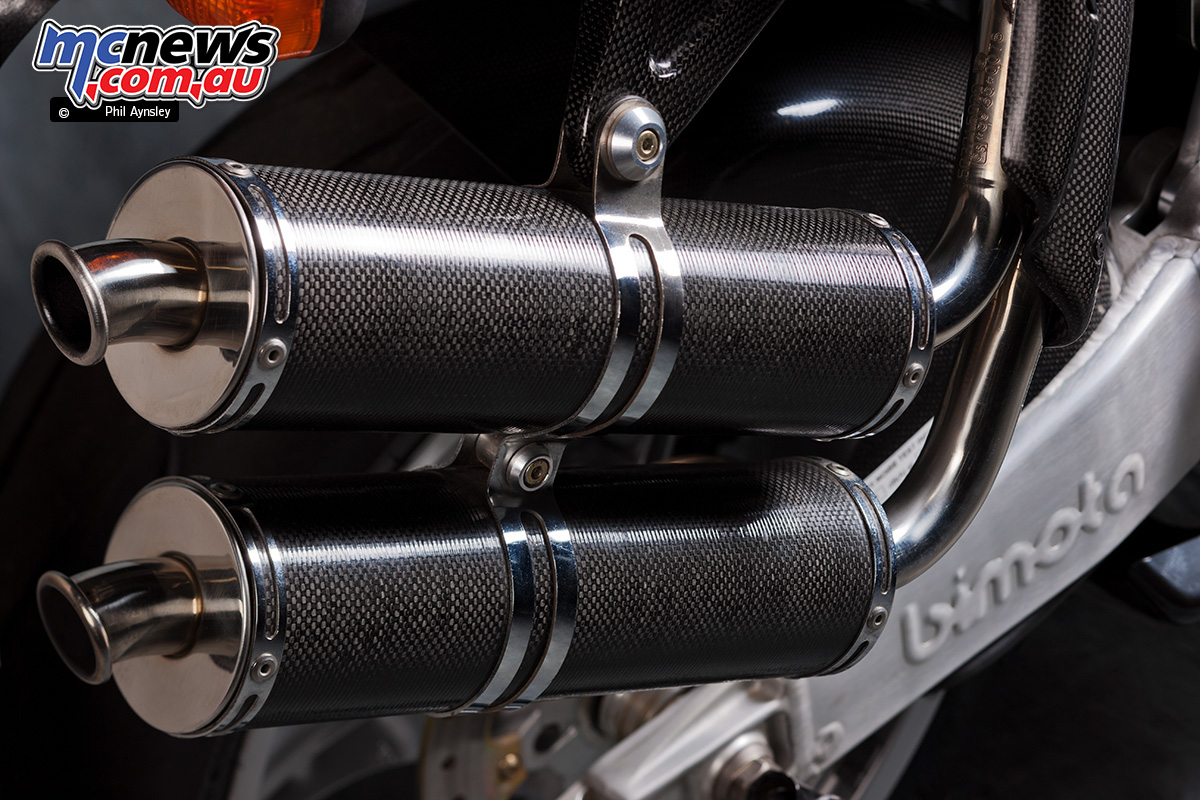
The concept of an extremely light and compact 500cc two-stroke that could rival the 1000cc superbikes of the era was all well and good, but the company needed to fix the two-stroke problem of passing the increasingly stringent emissions laws coming into force.
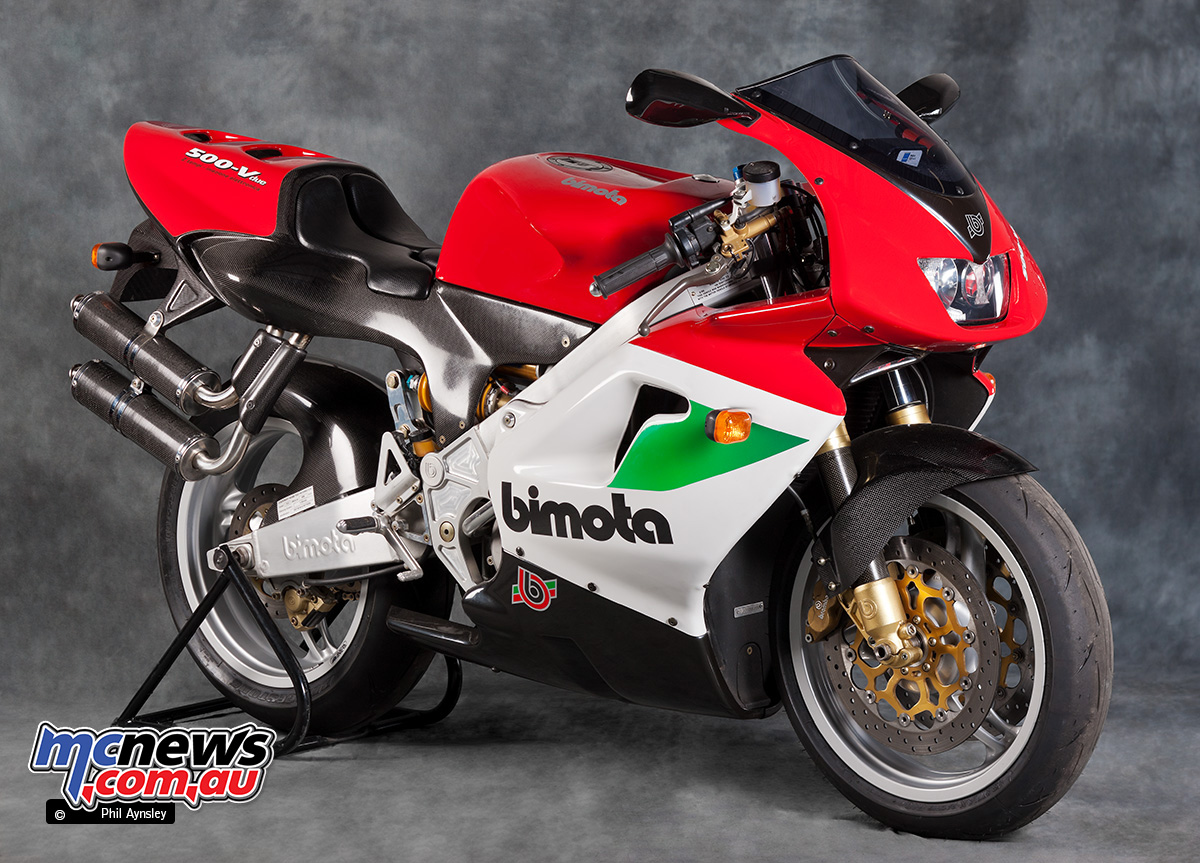
Bimota tackled this in two ways. The easy part was using forced lubrication to the bottom end so only minor oil mixing was needed to lubricate the pistons. The hard part was to fit fuel injection (with electronic ignition) to eliminate part of the raw unburnt fuel mixture exiting the exhaust port.
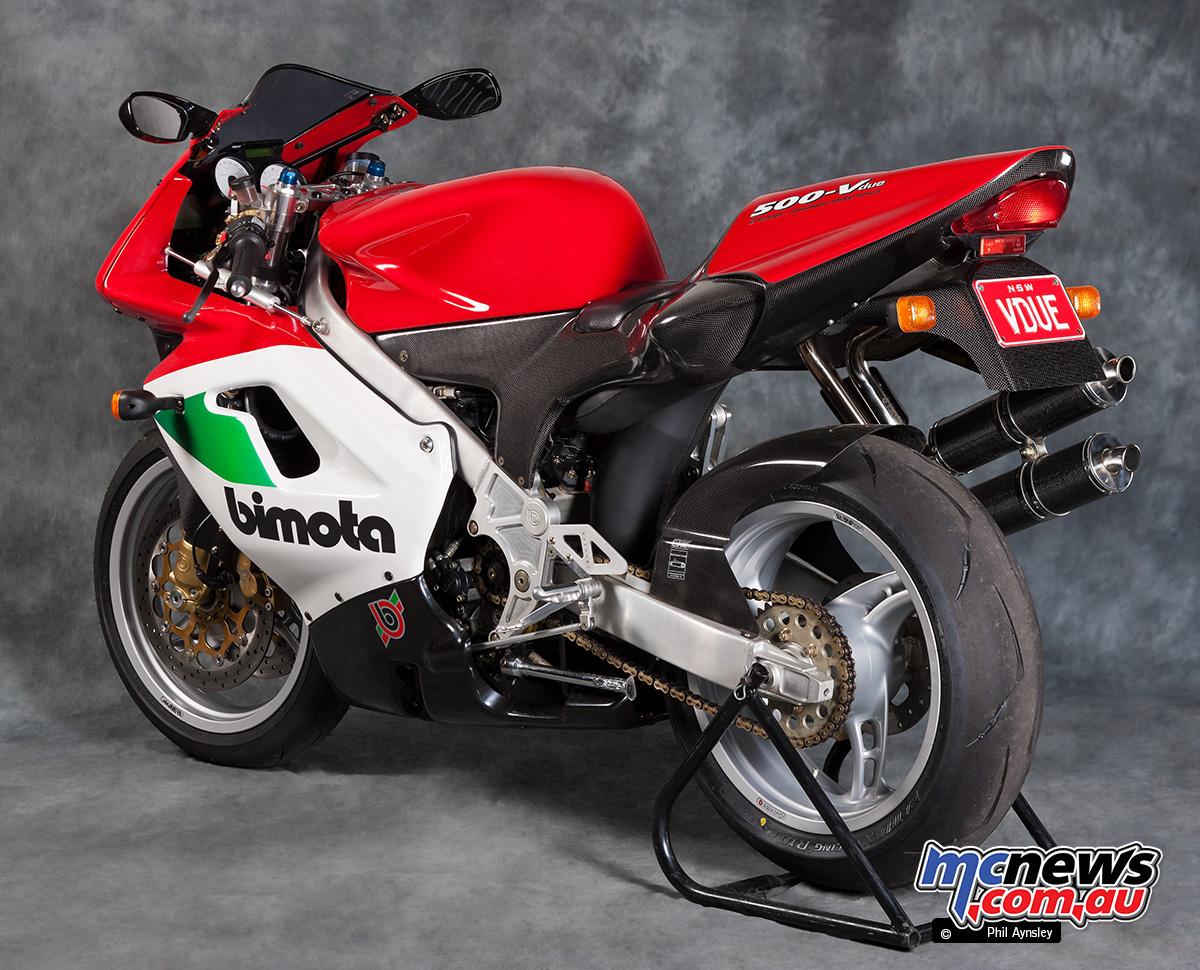
The prototypes used Ferrari sourced injectors that delivered extremely precisely metered mixture via very small diameter orifices – and these bikes worked very well. However mass produced injectors with these characteristics weren’t available so Bimota had to fit “second best” units.
The other complication was that the crankshaft seals were too weak and often leaked air into the combustion chamber. When combined with the variable fuel mixture from the imprecise injectors this resulted in erratic running – which made the bikes almost unridable.
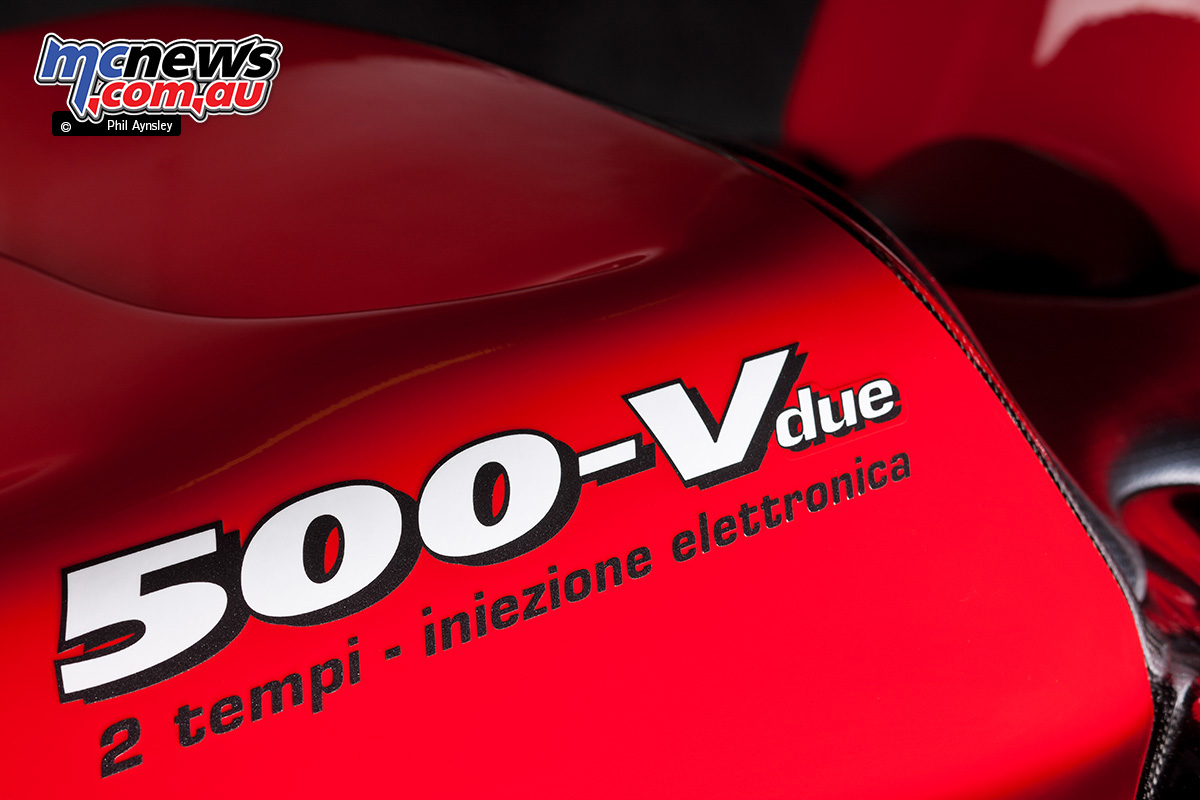
After several years of development the V-due was released in 1997, but while built to the usual incredibly high Bimota standards, the limited development budget told the story, with the company soon faced with having to accept back most of the 185 built due to the above mentioned problems.
During this recall period the company decided to sponsor a one-make racing series in Italy as a means of re-establishing the model. These Trofeo models replaced the fuel-injection with 39mm Dell’Orto VHSB carburettors with new manifolds and larger air-boxes but the erratic running was not fully fixed. It was then that crankshaft seal problem was discovered.
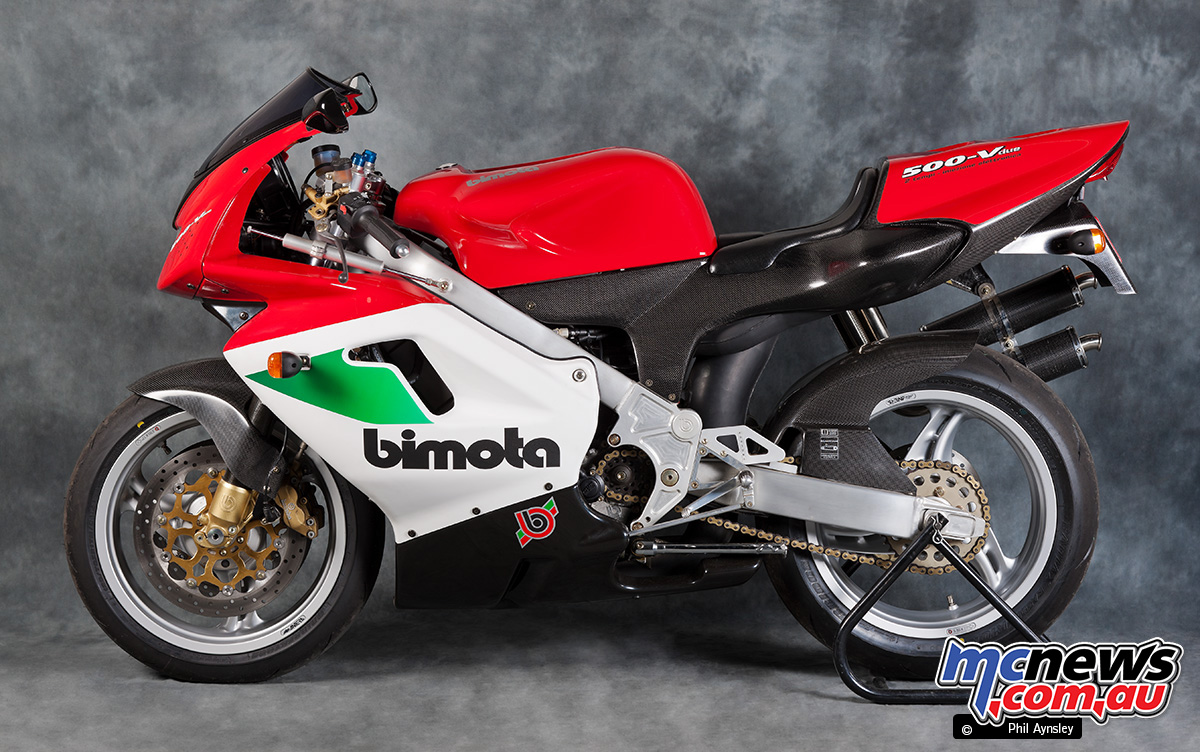
Due to there not being enough material in the crankcases for larger, stronger seals the “fix” was to use new seals with the same outer diameter but with a smaller inner diameter – which required the crankshafts to be turned down to fit the new seals. However a number of these modified crankshafts began to fail!
It was at this point that the company ceased trading. A total of 388 V-dues had been built (the final 203 with carburettors – 30 of which were racing Trofeos, three prototypes for the 2002-03 Italian championships and 170 road-going Evoluzione models).
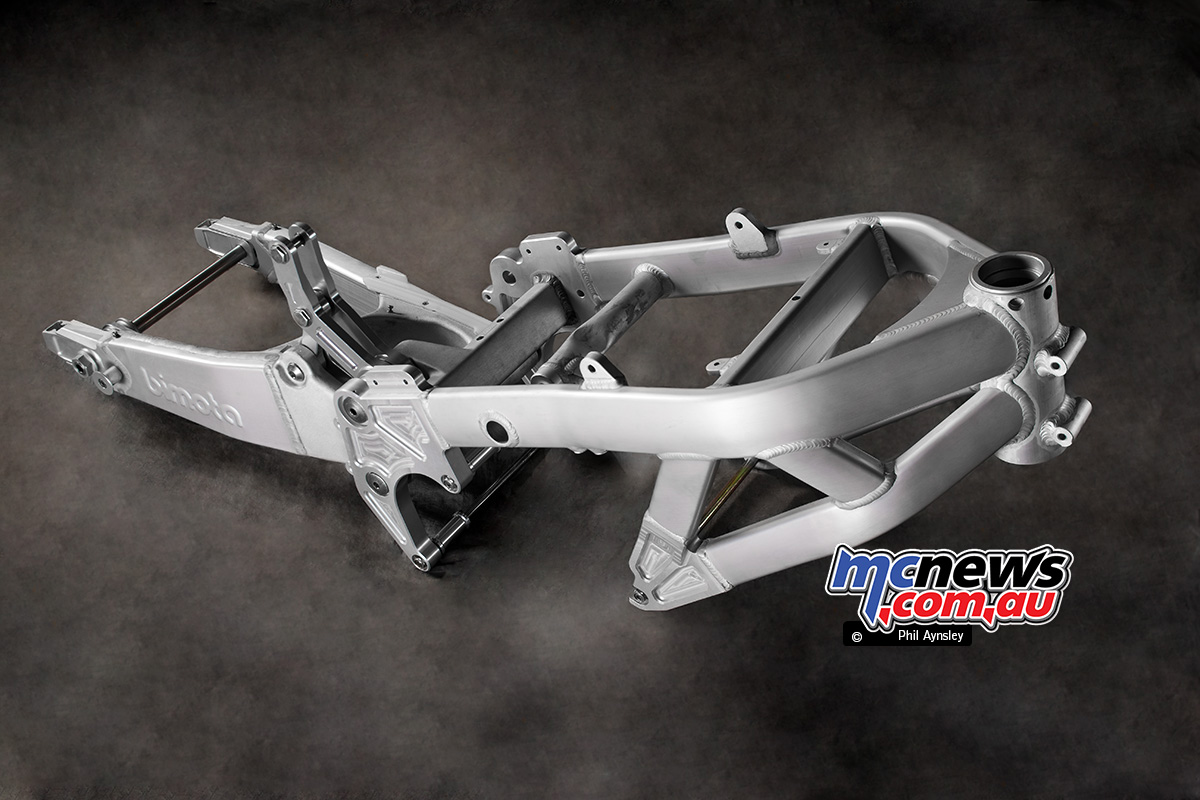
Bimota emerged from bankruptcy and the new owner immediately sold the entire V-due project – bikes, parts, patents, the lot, to Piero Caronni in Milan. His company retained the carburettors of the Trofeos/Evoluzione which meant that new ECUs, carbon-fibre air boxes, wiring harness and other modifications were required!
Most importantly new crankcases were cast that enabled lager seals to be fitted. New crankshafts were also designed. Caronni collaborated with Morini Motori in Bologna, among others to develop these new Evoluzione models which went on sale in 2003. Visually these models can be identified by the single, rather than twin, exhaust cans of the original IE and Evoluzione.

In 2005 the Racing EF (Edizione Finale) model was released. Only 35 of these track-only bikes were produced. They had new Asso pistons, hand-made JollyMoto exhaust, special Paioli forks, larger Brembo brakes and other detailed changes. The last five of the EFs featured racing con-rods, full carbon fibre, a 22 litre fuel tank, special paint work and used premix rather than oil injection.
In addition many individual specialist tuners around the world have used modern technology to refit/replace the original fuel injection and deliver, by all accounts, the riding experience Bimota envisioned all those years ago!
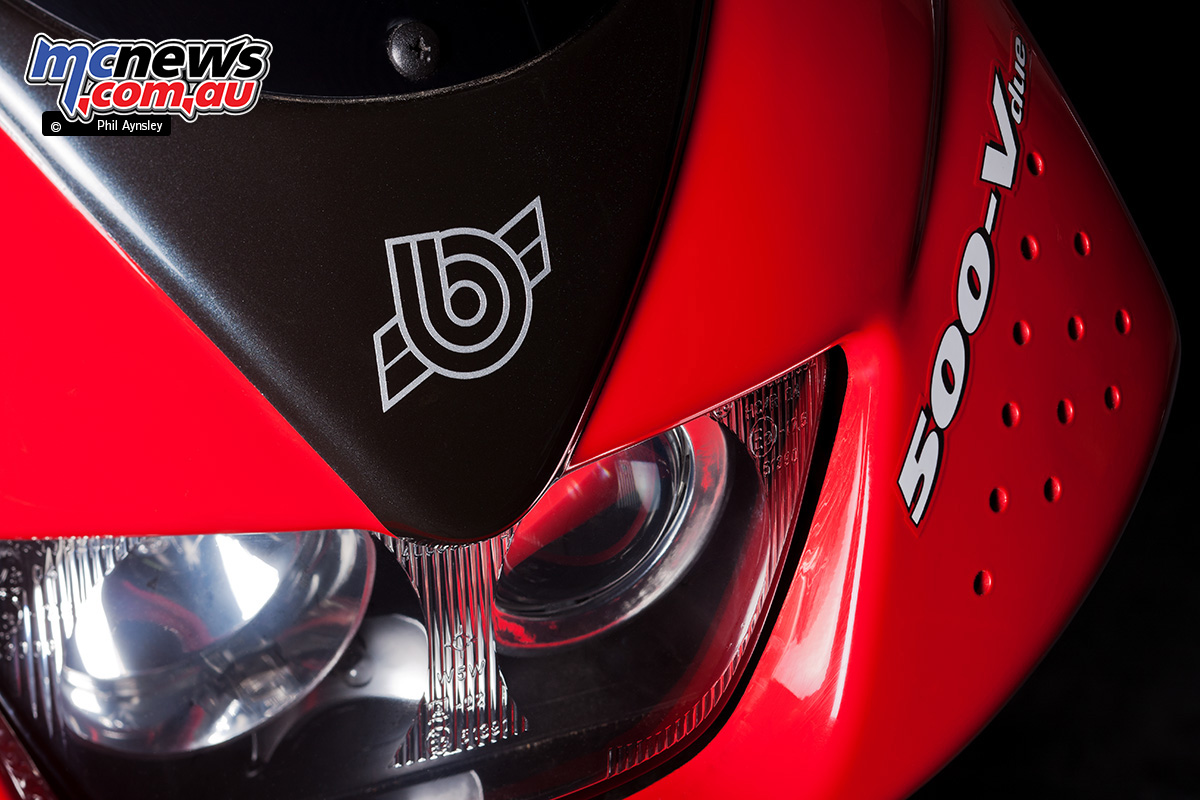
The particular V-due seen here is an untouched original model that was sent to Australia for ADR certification and is regularly ridden on the road. Here’s a run down on the basics of the various models that were available:
Bimota 500 V-Due IE
- 100hp at 9400rpm
- Dry weight 160kg
- Top speed 245km/h
Bimota 500 V-Due Trofeo – Race Models
- 105hp at 9500rpm
- Dry weight 155kg
- Top speed 255km/h

Bimota 500 V-Due Evoluzione – Road Going Models
- 110-115hp at 9800rpm
- Dry weight 155kg
- Top speed 255km/h
Bimota 500 V-Due Racing EF
- 125hp at 9400rpm
- Dry weight 145kg
- Top speed 255km/h
